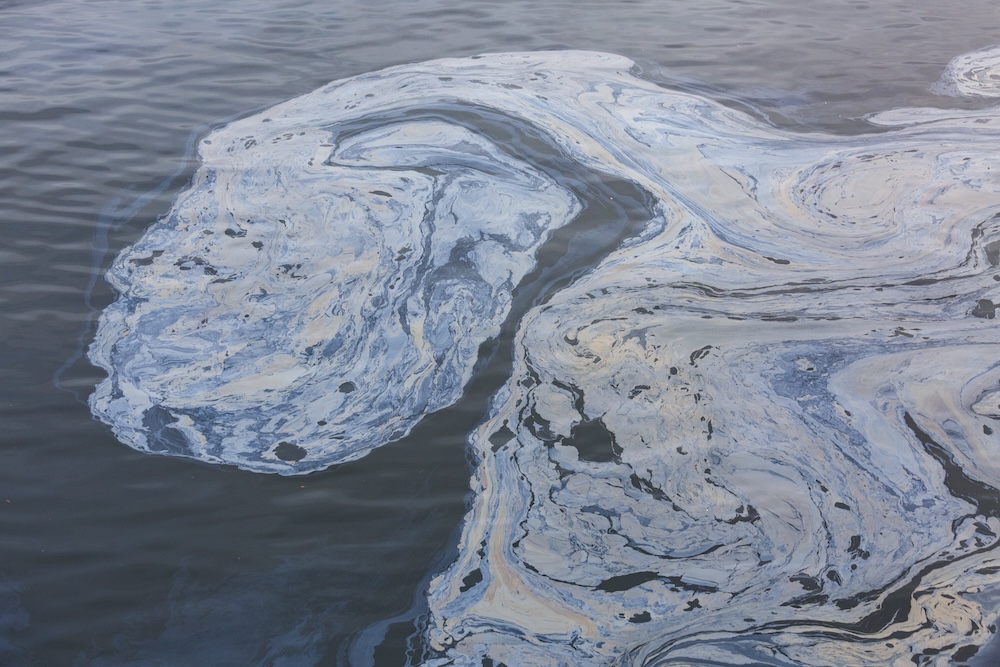Do Oil Spills Contain Lead?
Yes, oil spills can contain lead, along with a wide array of other toxic substances. While crude oil itself isn’t heavily loaded with lead like old gasoline once was, it often contains trace amounts of lead and other heavy metals—and when it spills, these contaminants can wreak havoc on ecosystems, wildlife, and human health.
Lead in oil spills doesn’t usually come alone—it’s part of a chemical cocktail that includes benzene, toluene, arsenic, mercury, and polycyclic aromatic hydrocarbons (PAHs). Together, these substances can contaminate air, water, and soil, sometimes for decades.
What’s in Crude Oil?
Crude oil is a complex mixture of hydrocarbons and natural impurities pulled from underground reservoirs. Its composition varies by source, but it typically includes:
- Alkanes, alkenes, and aromatics (the base hydrocarbons)
- Sulfur compounds
- Nitrogen compounds
- Trace heavy metals like lead, arsenic, mercury, vanadium, and nickel
- PAHs – cancer-causing chemicals formed during incomplete combustion
These impurities are what make crude oil—and the refined fuels and chemicals derived from it—so environmentally hazardous when spilled.
How Lead Gets into Oil
Lead can enter crude oil through natural geologic processes. Oil is extracted from deep rock formations, and during this process:
- Lead-bearing rocks can leach trace metals into the oil
- Drilling fluids and additives used in oil exploration and production can contain or mobilize heavy metals
- Storage and transport equipment, if corroded or poorly maintained, can leach lead and other contaminants into oil or surrounding areas
While concentrations are usually low, they become environmentally significant when large volumes of oil are released—like in tanker spills, pipeline leaks, or blowouts.
How Oil Spills Contaminate the Environment
Water
Oil floats on water but can mix and sink depending on conditions. As it spreads:
- Heavy metals like lead can dissolve or bind to sediments
- Aquatic life may ingest contaminated particles or absorb toxins through gills and skin
- Drinking water supplies can become unsafe for humans and animals
Soil and Sediment
Lead binds to soil particles and can:
- Make farmland and ecosystems toxic to plants and microbes
- Persist for decades with minimal breakdown
- Leach into groundwater over time
Air
When oil evaporates or is burned (as in some cleanup methods), volatile organic compounds (VOCs) and metal-laden particulates can be inhaled. Lead in the air—particularly lead dust—poses serious risks to human health, especially for children.
Health Effects of Lead from Oil Spills
Even in small amounts, lead is highly toxic to humans and animals. Long-term exposure can cause:
In Humans:
- Brain and nervous system damage
- Developmental delays in children
- Kidney and liver damage
- Anemia and reproductive issues
- Increased risk of heart disease and cancer
In Wildlife:
- Neurological impairment in birds, fish, and mammals
- Reproductive failure
- Behavioral changes that reduce survival
- Bioaccumulation – toxins move up the food chain, affecting top predators and humans
Examples of Oil Spills With Heavy Metal Contamination
Deepwater Horizon (2010)
The massive Gulf of Mexico spill released millions of barrels of oil, along with heavy metals and PAHs. Lead was detected in sediments and marine life, contributing to fishery collapses and long-term ecological damage.
Exxon Valdez (1989)
The Alaska spill caused lasting contamination of shorelines and wildlife, including evidence of lead and other metals persisting in beach sediments years later.
Niger Delta Spills (Ongoing)
Decades of unregulated oil extraction have left soil and groundwater heavily contaminated with lead and hydrocarbons, impacting human health and food security.
Cleanup Challenges
Cleaning oil is hard. Cleaning heavy metals like lead from an oil spill is even harder. Some reasons:
- Lead doesn’t evaporate or degrade—it stays in place unless physically removed
- Cleanup methods like burning may vaporize lead, making it airborne and inhalable
- Dispersants, often used to break up oil slicks, don’t neutralize metals and may worsen bioavailability
Once lead enters an ecosystem, it can remain toxic for generations.
How to Prevent and Minimize Lead Contamination from Spills
Regulations and Oversight
- Enforce strict standards on oil extraction and transport
- Require disclosure of metal content in crude oil
- Mandate better spill response protocols and metal-specific remediation
Safer Technologies
- Use corrosion-resistant pipelines and equipment
- Transition to renewable energy sources to reduce fossil fuel dependence
- Develop non-toxic drilling fluids and metal-free additives
Community Action
- Support transparency from oil companies
- Push for regular soil and water testing near refineries and pipelines
- Hold polluters accountable through litigation and environmental justice movements
Common Questions About Lead in Oil Spills
Is lead always present in oil spills?
Not always, but it’s frequently detected—especially in large spills or crude oil with higher natural metal content.
Can lead from oil spills get into seafood?
Yes. Lead can accumulate in fish tissue, especially in organs. Regular consumption may pose a risk to human health.
Is refined oil (like gasoline) safer?
Refined products contain fewer impurities, but they can still carry toxic additives and combustion byproducts—plus, spills of refined oil spread faster on water.
How long does lead from a spill stay in the environment?
Lead is persistent. It can remain toxic in soil and water for decades without intervention.
Can plants absorb lead from an oil-contaminated site?
Yes. Plants can take up lead through their roots, especially in contaminated soil, which can disrupt growth and make food crops unsafe.
Final Thoughts
Oil spills are more than slicks on the water—they’re chemical catastrophes, and lead is part of the danger we don’t always see. Invisible, toxic, and long-lasting, lead contamination magnifies the damage of every spill. But awareness leads to responsibility. With better regulation, cleaner energy, and smarter action, we can prevent spills—and protect ecosystems from poisons that never truly go away.









Reader Interactions